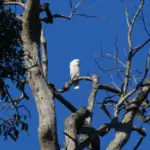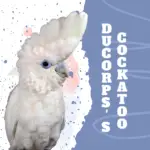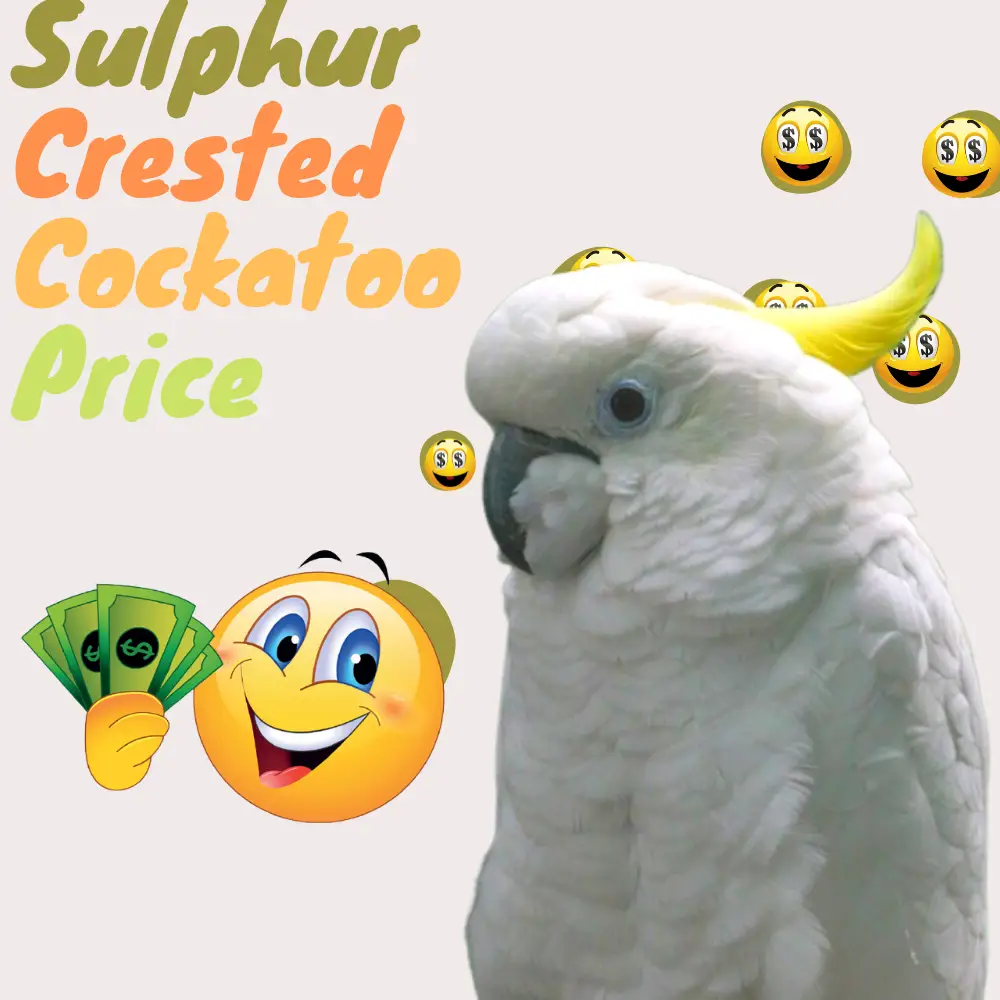
Sulphur crested Cockatoo Price: 45–55 cm; 815–975 g. White cockatoo with yellow ear-coverts and 14 cm long, erectile bright yellow crest; underside of wings and tail washed yellow; bill black; feet dark grey; periophthalmic skin white; eye dark brown in male, red-brown in female.
Juvenile like adult but eye pale brown. Race fitzroyi has little yellow on ear-coverts and periophthalmic skin is pale blue; triton smaller than fitzroyi, with broader crest feathers; Eleonora similar to triton, but bill smaller.
Cacatua galerita Scientific name definitions
- LC Least Concern
- Names (17)
- Subspecies (4)
- sulphur crested cockatoo cost: more than 400$
Systematics History

Sulphur crested Cockatoo Price
Editor’s Note: This article requires further editing work to merge existing content into the appropriate Subspecies sections. Please bear with us while this update takes place.
Closely related to C. ophthalmica and C. sulphurea. Additional described races include macrolophus (from W Papuan Is), kwalamkwalam (the Huon Peninsula, in NE New Guinea), and trobriandi (islands off SE New Guinea),
all now included within triton; aruensis is a junior synonym of Eleonora; queenslandica (from NE Queensland) and rosinae (from Kangaroo I, South Australia) are considered inseparable from nominating. Four subspecies are currently recognized.
Sulphur crested Cockatoo Lifespan
Up to 70 years in captivity.
Subspecies
Introduced (triton) to E Moluccas (Seram Laut), Palau Is (CW Pacific) and (possibly this subspecies) Taiwan; also (Eleonora) to Kai Is and (nominate race) to SW Australia and New Zealand.
SUBSPECIES
Cacatua galerita triton Scientific name definitions
Distribution
W Papuan Is, New Guinea, and its surrounding islands.
SUBSPECIES
Cacatua galerita eleonora Scientific name definitions
Distribution
Aru Is.
SUBSPECIES
Cacatua galerita fitzroyi Scientific name definitions
Distribution
N Australia from Fitzroy R (N Western Australia) E to the Gulf of Carpentaria.
SUBSPECIES
Cacatua galerita galerita Scientific name definitions
Distribution
E and SE Australia from Cape York S in coastal and subcoastal regions to SE South Australia (including Kangaroo I) and Tasmania.
Distribution
Editor’s Note: Additional distribution information for this taxon can be found in the ‘Subspecies’ article above. In the future, we will develop a range-wide distribution article.
Sulphur crested Cockatoo Habitat
In New Guinea, occurs in lowland forests, up to 1400 m. In Australia, inhabits forest, woodland, and cultivated cropland.
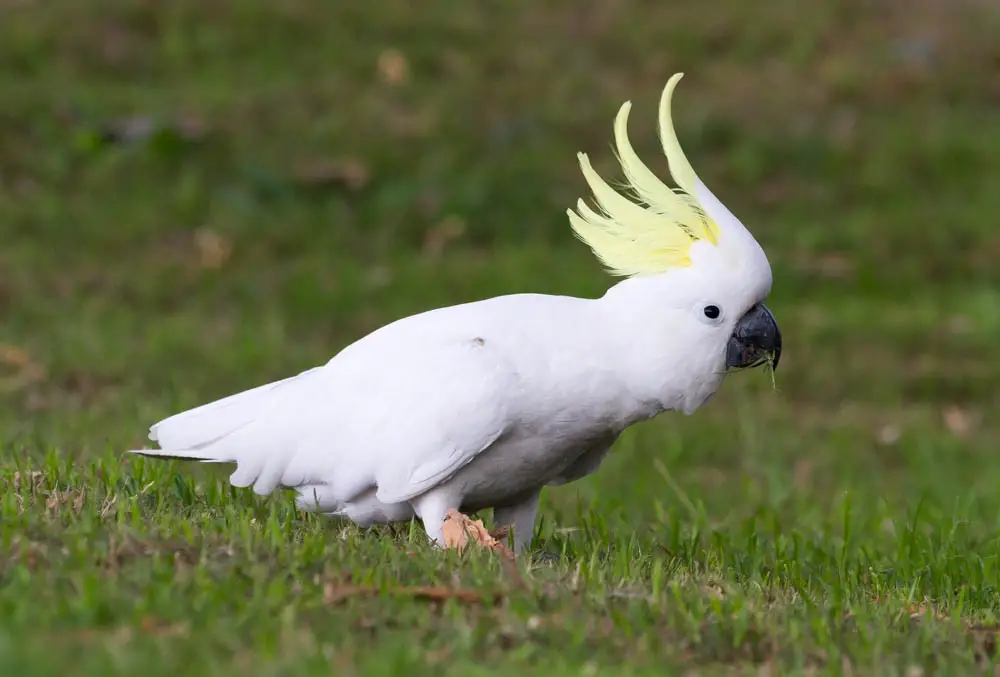
Sulphur crested Cockatoo Price
Movement
A strong flier, often foraging several kilometers from traditional roost or nest.
Flight
The Sulphur crested Cockatoo has a very characteristic flight composed of alternating rapid beats lacking amplitude and glides. This bird often flies at very high altitudes. He lets himself slide in large swirling circles to land on the ground.
Sulphur crested Cockatoo Diet
A wide range of seeds, fruits, and buds is gathered from the ground and in trees. Species considered a pest of cultivated crops, digging up recently sown seeds, eating ripening heads and grain fed to stock; long-renowned for flocks of foraging birds responding to alarm given by a sentinel individual; also damages stored hay and grain,
opening sacks and plastic-covered bales, and will sometimes also chew the wooden window frames of houses. Nominate race often feeds in large flocks of several hundred birds; the other races are seldom seen in groups of more than 20.
Sulphur crested Cockatoo Sounds
The commonest call, both in flight and when perched, is a very harsh grating note with a slightly slurred (somewhat variable) terminus, “rreh-ah”.
When perched, the vocabulary is more diverse, with most notes having a similar tonal quality to flight calls, combined with nasal squeals and squawks.
Sulphur crested Cockatoo Breeders
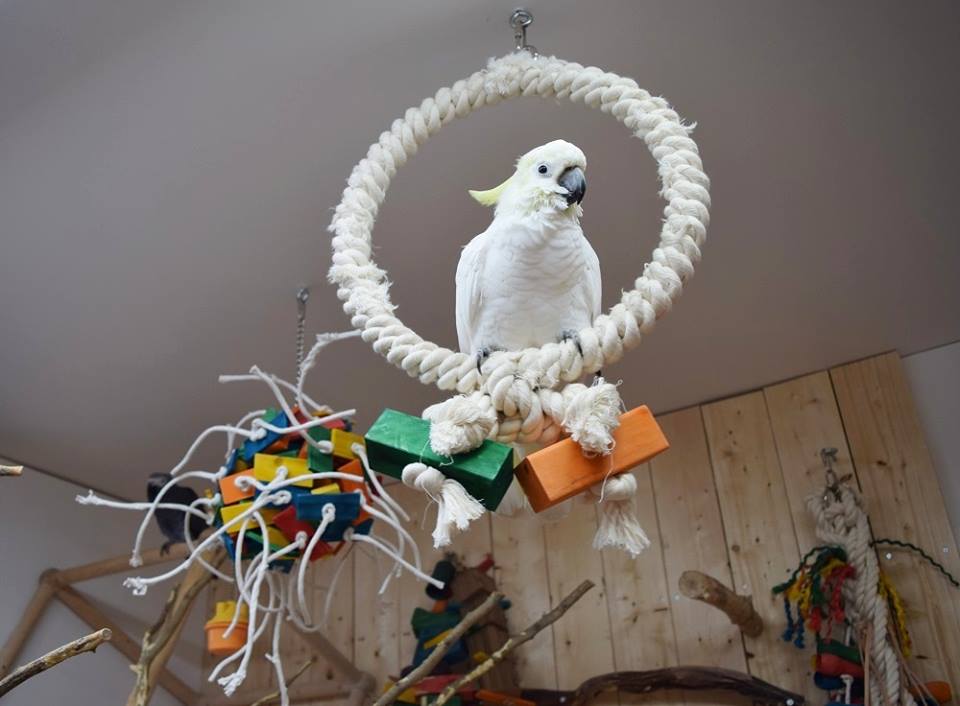
Sulphur crested Cockatoo Price
Season Aug–Jan in S Australia, May-Sept in N Australia; few records from New Guinea. Nest is a bed of woodchips in a tree hollow. Pairs tend to be territorial during the breeding season and to nest far apart.
Clutch 2–3 eggs, size (in captivity) 43·2 mm × 31·1 mm (race fitzroyi); incubation 25–27 days, by both adults; chick has sparse yellow down; nestlings remain in hollow for 9–12 weeks, where they are fed by both parents. Fledglings remain with parents for several months, foraging together in a locally nomadic flock.
Sulphur crested Cockatoo Nest
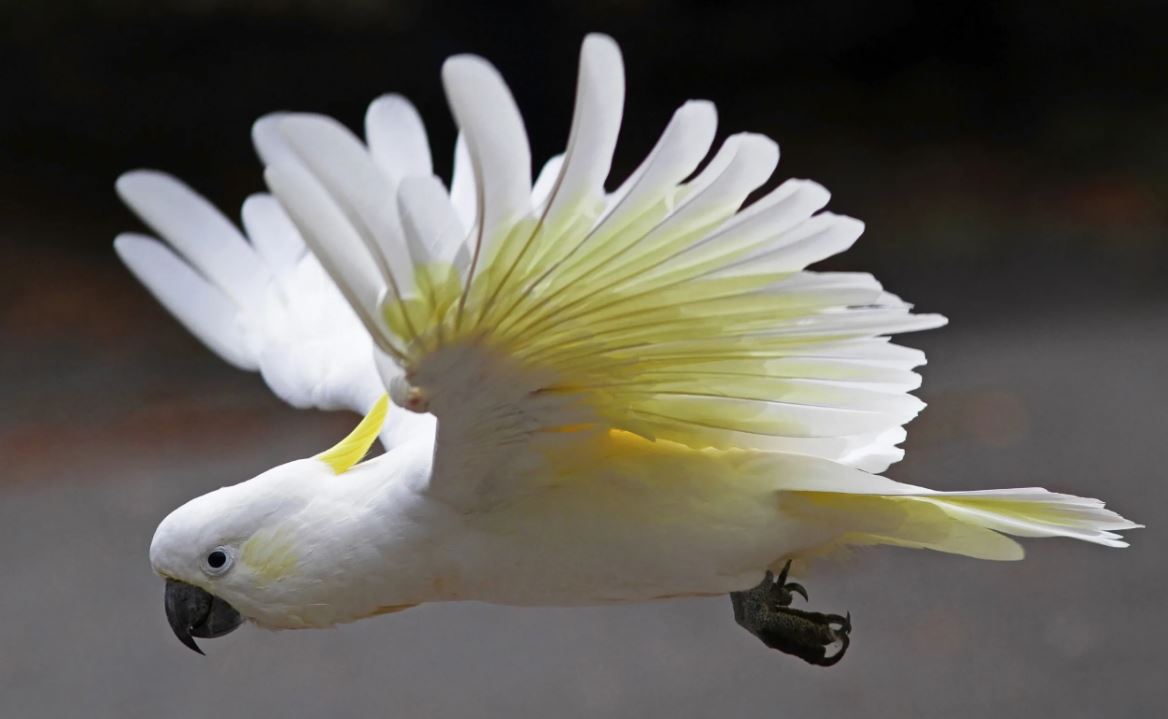
Sulphur crested Cockatoo Price
This species is endemic to northern and eastern Australia, New Guinea and nearby islands, particularly the Arus Islands, Indonesia. It has been successfully imported to the Palau Islands in Micronesia, New Zealand and some islands in the eastern Moluccas.
Sulphur crested Cockatoo lives mainly below 1000 meters of elevation, but it can sometimes be observed up to 1500 m in Australia and over 2000 m in eastern New Guinea.
Five subspecies are officially recognised: Cg galerita (eastern and south-eastern Australia, from northern Queensland to Tasmania and south-eastern South Australia, including Kangaroo Island) – Cg Queensland (the Cape York Peninsula and Torres Strait Islands) – Cg Fitzroy (northern Australia, from the Kimberley district to the Gulf of Carpentaria) – Cg triton (islands of West Papua, New Guinea) – Cg Eleonora (Arus Islands).
Sulphur crested Cockatoo Behaviour
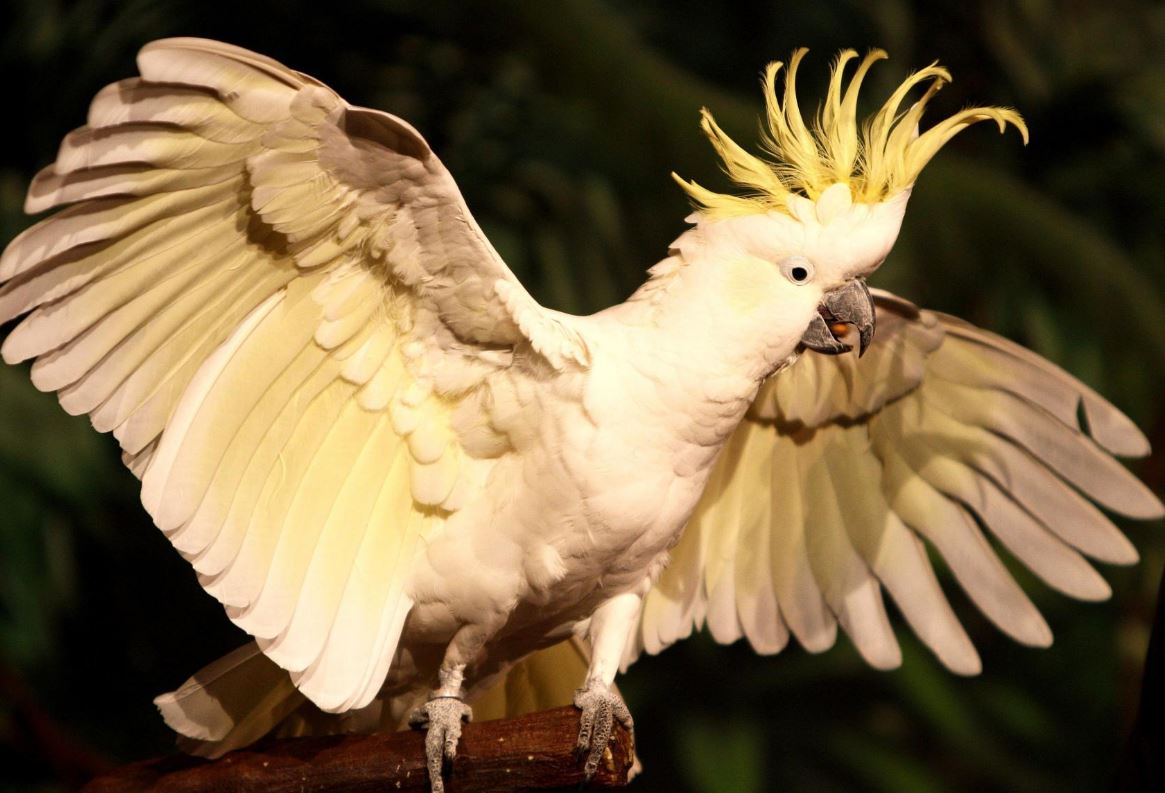
Sulphur crested Cockatoo Price
Sulphur crested cockatoos are noisy parrots and quite easy to observe, although they are best identified by their calls. During the breeding season they live in pairs or small family groups, but the rest of the year they are found in large flocks that can contain several hundred birds.
In urban areas, and especially in places that have feeders, they adopt a familiar behavior. Elsewhere, they retain their usual mistrust and caution and are very difficult to approach.
In open country, particularly in South Australia, these birds set up a sentinel system which is organized as follows: while the bulk of the flock is feeding, a few birds stand apart on a nearby perch and are likely to give the alarm if danger arises.
Sulphur crested cockatoos have a strong tendency to use communal roosts, even when these are far from feeding grounds. They flock there in large numbers and they often occupy the site for a long time.
In Australia, one roost is known to have been occupied by over 500 birds for 17 consecutive years. At dawn, the crested cockatoos yellow leave their perch to quench their thirst in a nearby spring.
In the morning and late afternoon, they spend their time feeding. In the middle of the day, at the hottest times, they take shelter in the surrounding trees, damaging the foliage and the bark to such an extent that they often cause their destruction.
In the evening, the Sulphur- crested Cockatoos return to their dormitory. The birds of New Guinea and northern Australia are mostly arboreal, whereas those in the south primarily forage for food on land.
Sulphur- crested cockatoos yellow often provide collective defence, which allows them to successfully counter attacks by kites and bats (Macheiramphus alcinus).
During courtship, males curtsey and nod their heads forming an “8” shaped figure. They produce a low chatter and ruffle their crest. Mutual preening and beak touching are also very common rituals.
Meet My Lesser Sulphur Crested Cockatoo Thai | PARRONT TIP TUESDAY
SOURCE: MARLENE MC’COHEN
Conservation Status
Not globally threatened. CITES II. Status stable in Australia and unlikely to change, so long as overseas trade in native birds is proscribed; populations in and around New Guinea reduced with the recent clearing of forests, but not currently reckoned to be endangered.
Birds released from captivity can rapidly multiply and establish populations outside their normal distribution, as has happened in Western Australia. Very popular as aviary birds but very wary and not easy to trap.
Are sulphur crested cockatoos protected
Sulphur crested Cockatoo is a common bird. Its numbers, estimated at more than 500,000 individuals, are considered to be stable or slightly increasing.
Despite its protected status over most of its range, it is not immune to certain threats. In areas with heavy agricultural activity, such as Perth or South Australia, this species does not benefit from protection when it enters cultivated areas.
It is likely to be eliminated if it causes crop damage. sometimes hunted for its feathers in New Guinea. Throughout the Australian continent, it is a very popular pet bird. Luckily, it turns out to be very difficult to capture.

